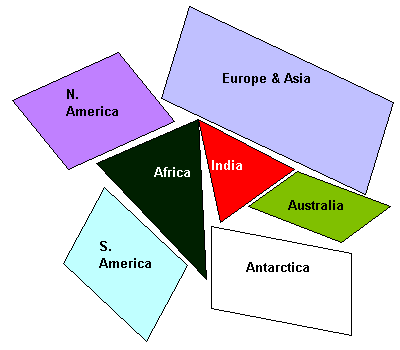immigrants or colonists?
Modern history starts in the late 15th century, around the time that Columbus discovered America in 1492, and from then until today the world has seen a massive shift of populations that completely overshadows the Greek colonial expansion of c. 3,000 years ago -- by which the Greeks populated the entire Mediterranean coastline from North Africa to Europe -- as well as the original movement out of Africa of our ancestors millions of years ago.
Like the Greek migrants, the modern migrants were not only assisted in their migration by their homeland but were also closely tied to it and dependant upon it.
Technically, migrants, or emigrants, are people who leave their country of birth to live elsewhere; and immigrants are migrants who come to live in another country with a population different from theirs.
It is impossible to be an emigrant without being an immigrant, and yet even though the lands these people were colonizing had indigenous populations and, in most cases, great civilizations, none of them thought of themselves as anything other than Spanish, Dutch, French or English or whatever.
In effect, like the Greeks before them, these people were colonists -- they had no intention of integrating with the indigenous populations -- and they saw the new lands as extensions of their homelands.
While colonization or expansionism was a marked feature of the Hellenic civilization (1300 BC - 558 BC), the Polynesian civilization (500BC - 1775AD), the early Islamic civilization and the Ottoman civilization (1310 - 1919), none can compare with the voracious greed for more land, more subject populations and more wealth than the Western civilization during the period 1600 - 1900.
For 300 years from 1600 to 1900 the European nations, particularly England and Spain, dispatched hundreds of thousands of migrants to the new colonies.
The period from 1492 to 1918 represented the so-called golden era of Western civilization. It was marked by incredible advances in science and technology that fuelled the expansionist zeal of all of the European nations that, in turn, resulted in hundreds of thousands of mediocre 'civilized' Europeans becoming incredibly wealthy and powerful through the exploitation and enslavement of other nations considered by them to be 'uncivilized'.
From 1492 onwards, then, western civilization evolved into an aggressive super-civilization, characterized by an emphasis on:
colonization - the need for more land to house and feed excess populations, usually obtained by forceful occupation and subjugation of indigenous populations;
trade - the need to expand import and export markets;
resources - the need to find new animal, vegetable and mineral resources to fuel the old economy;
power and greed - the desire for wealth and cheap labor; and
racial superiority (a concept that marks all civilizations, not just the western civilization).
Although some very early colonists migrated in order to enjoy religious freedom, the overriding purpose of migrants from Europe was to make a fortune in the colonies in order to establish themselves back home.
A lot of migrants did achieve their purpose, returning in later life to their homelands to enjoy a luxurious retirement, but the majority of migrants either did not get rich or loved their new land so much that they did not wish to return home.
It was at this point, when the former colonists became settled, that new settlers became 'immigrants' and were expected to integrate.
Immigrants who refuse to integrate and arrive in large numbers from a particular nation are, in effect, assuming the guise of 'colonists' intending to take over control of the land and its peoples.
Labels: 1492, africa, colonists, columbus, emigrants, greeks, immigrants, immigration


